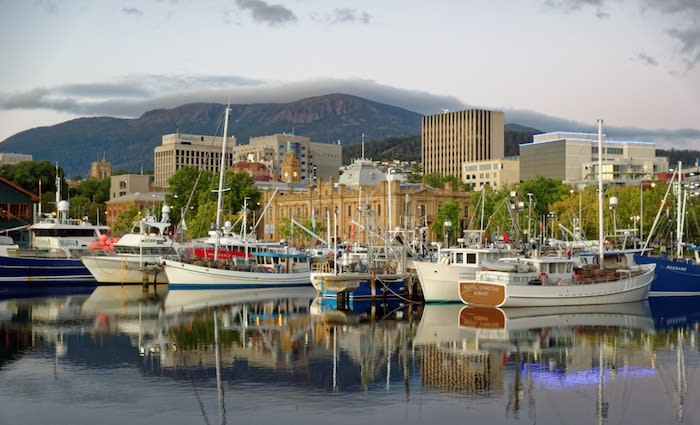Tasmania passes property market peak after two years of growth: Hotspotting's Terry Ryder
EXPERT OBSERVER
Hobart and Tasmania are national leaders on price growth – although analysis of the latest sales activity data suggests the market has passed its peak after two years of strong growth.
In terms of annual price growth, Tasmania remains the undisputed champion of Australia. Nine out of ten locations across the state have increased their median prices in the past year – and many of them have recorded double-digit growth.
Hotspotting has analysed house price data for 76 suburbs and towns in Tasmania: 69 of them (91%) have recorded growth in their median house prices in the past year. Of the 69 house markets with price growth, 56 have increased by more than 5%, including 35 which have risen 10% or more.
Only 9% of Tasmanian house markets have experienced decreases in median prices – and only one location has dropped by more than 5%.
In the Hobart metropolitan area, the suburbs of Austins Ferry, Chigwell, Gagebrok and Risdon Vale have all increased between 20% and 25% in the past 12 months.
In Launceston, price uplift has been led by East Launceston (17%), Newnham (12%), South Launceston (16%), Summerhill (12%) and West Launceston (12%).
In other parts of regional Tasmania, Scottsdale and Upper Burnie have both recorded 15% rises in their median house prices.
There are also examples of exceptional growth in unit markets, where 81% of locations have rising prices.
Growth markets for apartments in Hobart include Bellerive (16%), Claremont (19%), Glenorchy (16%), New Town (18%) and West Moonah (20%) – but the highly-rated suburb of Lindisfarne is the standout, with its median apartment price rising 32% to $445,000, based on 45 sales in the past 12 months.
In Launceston, there have been 25-26% rises in median unit prices in Newnham and Prospect Vale.
Strong though those results are, they are a little less spectacular than our findings three months ago. In that previous report we said: “In Hobart, we can find no suburbs with falling prices and none with minor growth. All have increased by more than 5% in the past 12 months – and 80% of them are up at least 10%. A key feature is most have recorded rises in the latest quarter, which indicates prices are still growing.”
So the current data represents a strong result, indeed the strongest anywhere in Australia, but not as strong as three months ago. This confirms our overall conclusion that markets in Hobart and Tasmania have passed the peak in their cycles and are gradually winding down.
The strongest evidence of this comes from our analysis of quarterly sales activity. We have classified 16 locations as rising markets, the lowest number in any quarter since late in 2016.
The rise of markets in Hobart, Launceston and other parts of Tasmania began with a steady uplift in sales activity early in 2017 and we have seen strong sales activity since then, leading to nation-leading price growth.
But now sales volumes are subsiding and the number of plateau markets across the state is the highest since we began our quarterly surveys five years ago. Indeed, the number of plateau markets in Tasmania, quarter-by-quarter in the past two years, has been 17, 30, 39, 39, 40, 43, 46 and 54 – a clear pattern showing the increase in the number of locations where sales activity has passed its peak.
There are still suburbs with growth markets (measured by sales volumes) in both Hobart and Launceston. In the Hobart metropolitan area, suburbs that still have growth momentum include Berriedale, Bridgewater, Rokeby, Sorell, Old Beach, Margate and Howrah.
In Launceston, the suburbs that still have forward momentum include Mowbray, Prospect and Newnham.
Elsewhere in the state, growth markets include Cygnet in the Huon Valley south of Hobart, George Town in the north of the state near Launceston, Longford in the Northern Midlands, and Smithton in the Circular Head LGA in the far north-west.
While all the recent evidence suggests Hobart and Tasmania are gradually winding down from the peak of the cycle, the key question is whether recent positive events at a national level (election result, APRA changes, lower interest rates, tax cuts, etc) will re-ignite the state’s mini-boom.
We’ll know more three months from now.
Terry Ryder is the founder of hotspotting.com.au
twitter.com/hotspotting
